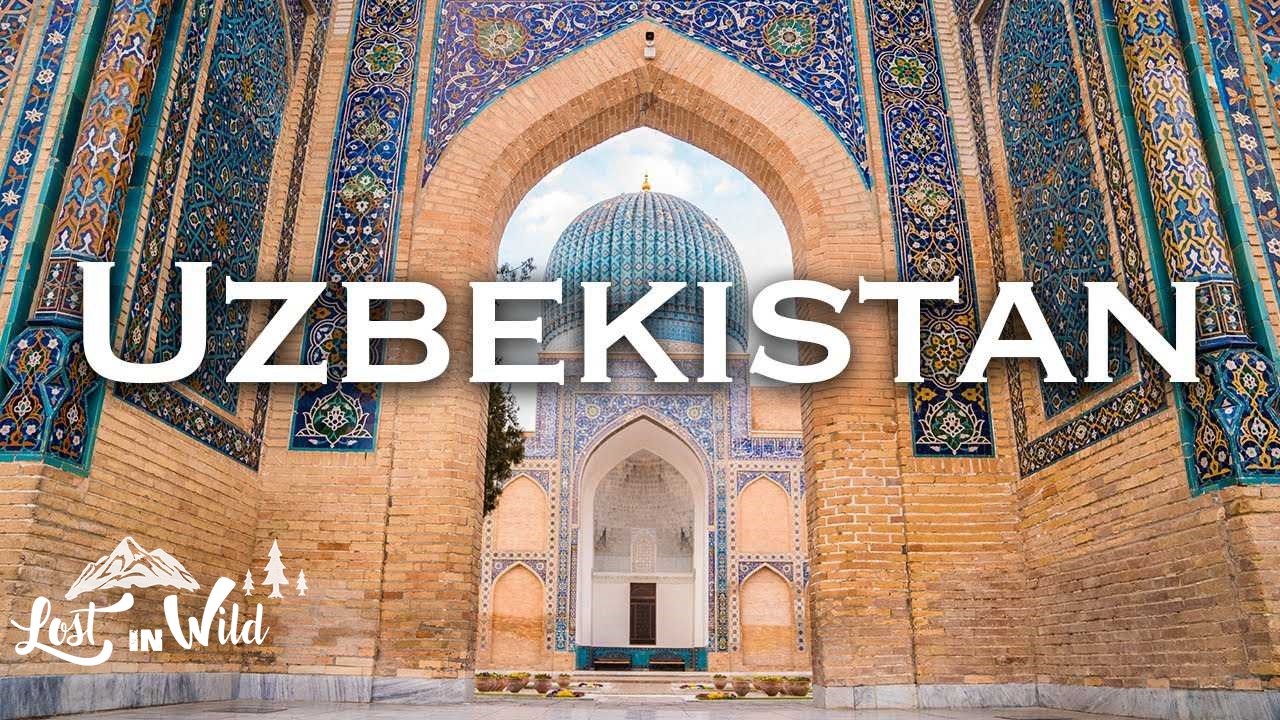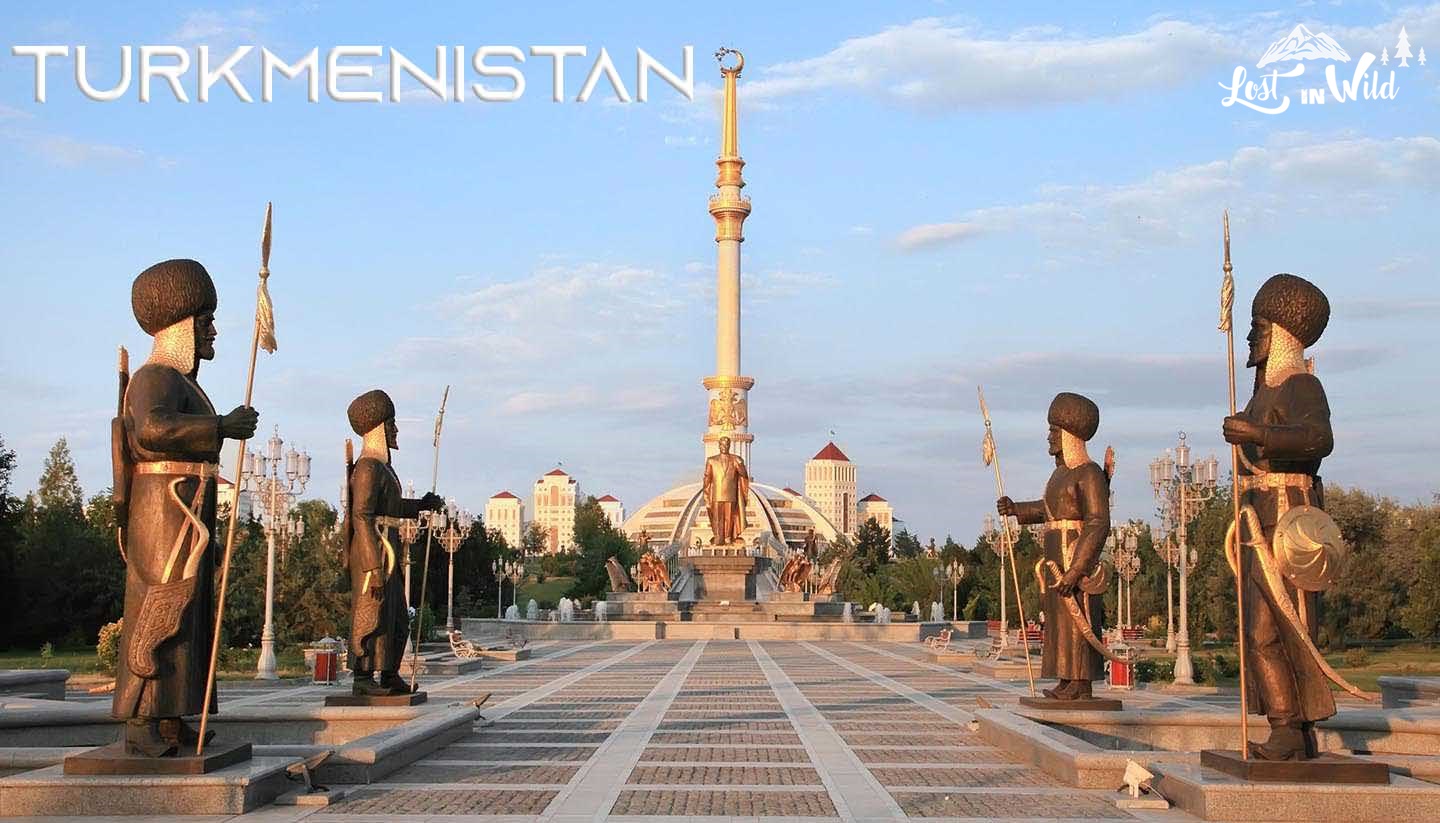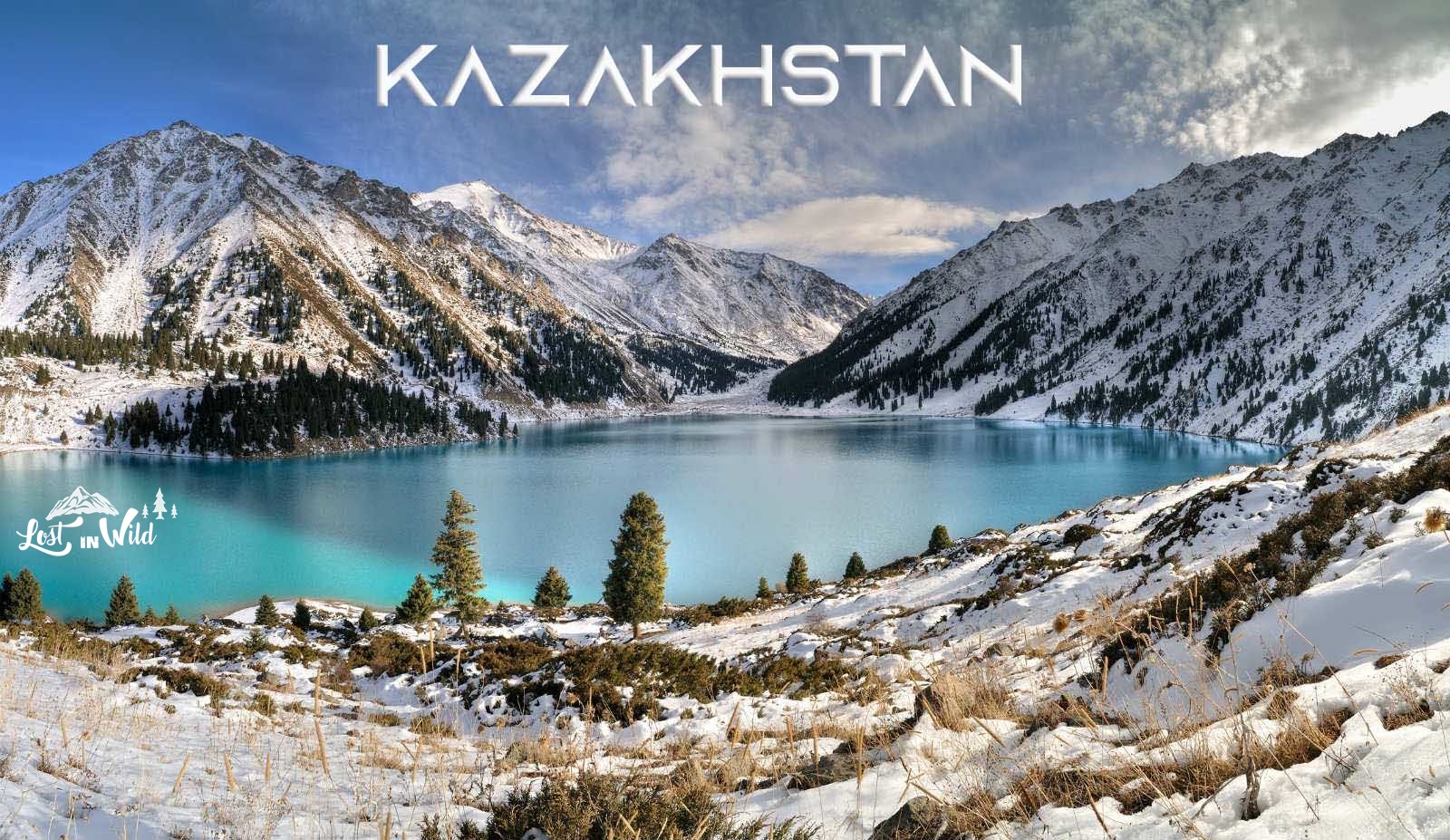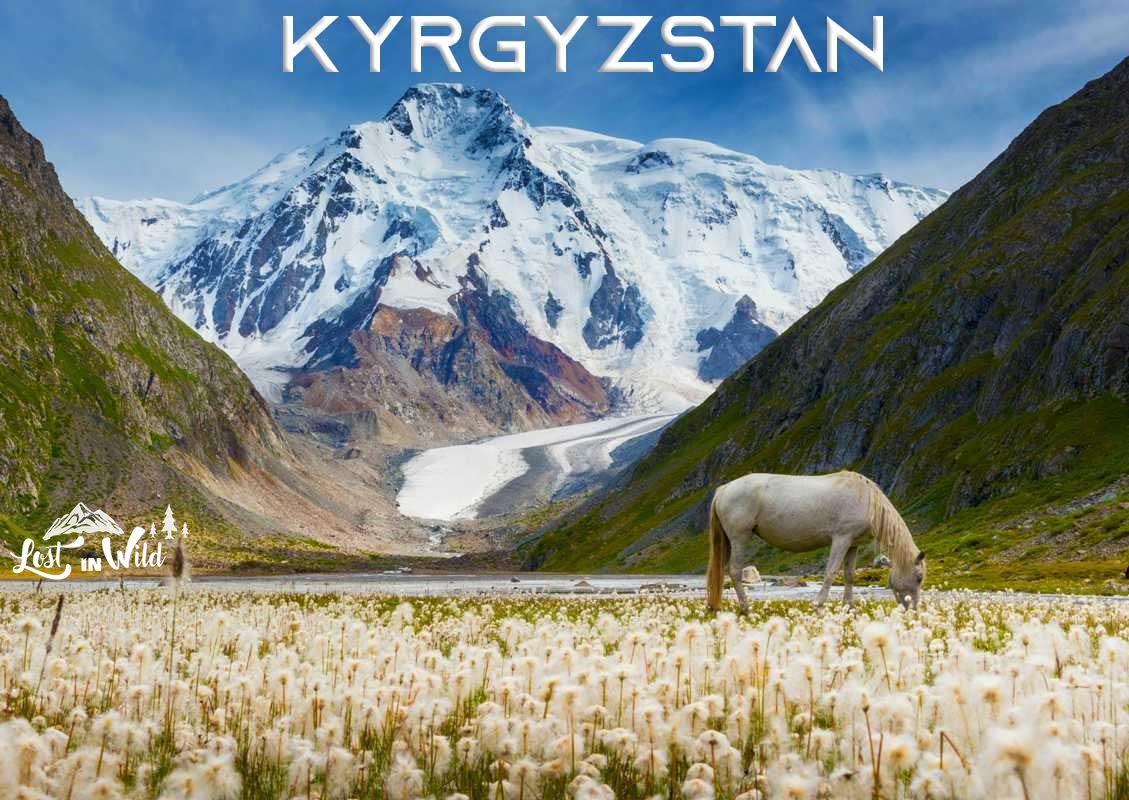Central Asia
“Predominantly mountainous” is the most appropriate term to define Central Asia as the majority of land in the region is covered with mountains. It is a 4,003,451 km2 territory that extends from the People Republic of China in the east to the Caspian Sea in the west, and from Russia in the north to Iran as well as Afghanistan in the south.
Famously referred to as the “Home of stans”, this region comprises of the former republics of the Soviet Union. For centuries, Central Asia has acted as a linking bridge to connect South Asia, Western Asia, East Asia, Africa, Arabian Peninsula, and Europe for immigration in addition to trade via the Great Silk Road.
During 19th as well as 20th century, Central Asia was a part of the Russian Empire. Following the collapse of the USSR (Union of Soviet Socialist Republics) in 1991, five states opted for independence including Uzbekistan, Kazakhstan, Turkmenistan, Kyrgyzstan, and Tajikistan that later became part of this territory. The inspiring high-altitude picturesque landscape coupled with the unscathed lakes, pristine rivers, splendid valleys, historic towns, inimitable cultural diversity, and nomadic lifestyle of locals make these ‘stans’ a tourist’s reverie.
According to the 2019 census, the population of Central Asia is approximately 72 million. The majority of these people are Sunni Muslims. Although Shia Muslims, Zoroastrians, Buddhists, Christians, and Bukharan Jews also form sizeable minority communities.
Travel Guide To Central Asian Countries
The Caspian Sea, Aral Sea, Lake Kaindy, Issyk Kul mountain lake, Son-Kol alpine lake, stunning Tajikistan’s Turquoise Lakes, Amu Darya River, Chimbulak Ski Resort, Darvaza Flaming Crater (The Gates Of Hell), massive Karakarum Desert, Parthian Fortresses of Nisa, ancient towns, Scenic valleys, gigantic Fann Mountains/Tian Shan Mountains, incredible Pamir Peaks, astounding savannas, grassy steppes, temperate as well as montane grasslands, vast shrublands, temperate coniferous forests, striking National Park, Burana Tower, Charyn Canyon, Registan Square, Greater Kyz Kala, stunning trekking trails, Merv Oasis, Konye-Urgench, Kochkor, Kokand, Turkestan, mesmerizing heritage sites and Tajik Wakhan Corridor, are the most popular tourist destinations in the Central Asia.
This region is residence to some of the oldest archeological and architectural metropolises of the world including Bishkek, Nur-Sultan, Dushanbe, Tashkent and Ashgabat.
1. Uzbekistan, Central Asia

The Republic of Uzbekistan is a doubly landlocked state in Central Asia surrounded by Kazakhstan, Turkmenistan, Tajikistan, Kyrgyzstan, and Afghanistan. Referred to as the “cultural cradle” of its region, Uzbekistan is a unitary constitutional country that stretches over 447,400 km2 comprising of an autonomous state, a mesmerizing capital (Tashkent aka “The Cultural Capital of The Islamic World”), and 12 provinces.
Uzbekistan is the chief cotton producer as well as exporter of the world. It has a plenteous natural gas supply that when coupled with the country’s magnificent power-generation facilities does wonders beyond human imagination. Consequently, Uzbekistan is the leading electricity manufacturer in Central Asia. Furthermore, it operates the world’s biggest open-pit gold mine.
Language of Uzbekistan
Uzbekistan is culturally diverse because of its strategic location and famous history. Its population consists of almost 32,768,725 people. The official language of the state is Uzbek. Although the locals can also speak Karakalpak, Russian, or Tajik.
Climate
The climate of Uzbekistan is principally dry with long, hot summers and mildly cold winters. The best time to travel to Uzbekistan is from April till October.
Famous Tourist Places in Uzbekistan

Uzbekistan is the center of captivating ancient cities with spellbinding architecture, history, culture and people. The Aral Sea, Samarkand, Bukhara, Khiva, Ferghana Valley, Kyzylkum Desert, Zeravshan River, Syr Darya, Amu Darya, Khazret Sultan, Mountains of Hissar Range, Nuratau Mountains, Pamir Mountains, Tashkent, Registan, Shakhrisabz, Gur-e-Amir Mausoleum, Pahlavon Mahmud Mausoleum, Khanaqah, Qafal Shashi Mausoleum, Shah-i-Zinda, Bibi-Khanym Mosque, Kalon Mosque, Tosh-Hovli Palace, History Museum of the People of Uzbekistan, Char Minar, Kalon Minaret, Kalta Minor Minaret, Khan’s Palace, Ak-Saray Palace, Tilla-Kari Medressa, Ulugbek Medressa, Sher Dor Medressa, Ichon-Qala, and Lyabi-Hauz, Khanaqah, Taq-i Zargaran, Pay-i Kalan, Char-Bakr Complex, Jeyran Ecological Centre, Kitab State Geological Reserve, Ugam-Chatkal National Park, Kyzylkum Tugai and Sand Reserve, are some of the most visited tourist destinations in Uzbekistan.
Visa Policy and Cost to Obtain Uzbek Visa
The citizens of 50 countries including Kyrgyzstan, Tajikistan, Kazakhstan, Russia, Australia, Canada, France, Indonesia, Finland, Germany, Monaco, Malaysia, Singapore, Korea, Turkey UK, Croatia, Portugal, and Japan etcetera can enter Uzbekistan visa-free for 30-60 days. The e-visa of the country costs almost US$40. While the standard travel visa of 30 days costs US$60-US$100 for the majority of countries but US$160 for the residents of the United States.
Uzbekistan’s visa rules for the tourists depend upon the inter-governmental relations of countries. The immigration procedures are quite extensive. Additionally, a letter of invitation (LOI) costing US$40 to US$50 must be submitted to the Uzbek embassy for visa issuance. LOI can be obtained from travel companies.
Uzbekistan Travel Budget
Uzbek Som is the official Uzbek currency. Uzbekistan is a bit expensive. Although, the prices of goods are quite flexible. The majority of the ATMs only accept local Uzbek cards.
2. Tajikistan, Central Asia

The Republic of Tajikistan is a landlocked country bordering Afghanistan, China, Kyrgyzstan, and Uzbekistan. Entitled as the “Roof of the World”, it is the smallest state in Central Asia that extends over 143,100 km2. The presidential state of Tajikistan comprises four provinces with more than 90% of the land covered by high-altitude mountains. Its economy is based on immigrant remittances, production as well as the export of cotton and Aluminium.
With a population of 9,275,832 citizens, Tajikistan is a secular state. Although 98% of its population is Sunni Muslim.
Language
Tajik is the official language of the country. Residents can also speak Russian, Rushani, Wakhi, Shughni, or Ishkashimi.
Climate
Tajikistan’s climate is continental characterized by fairly cold winter and dry, hot summer. The annual precipitation rate is also very low, hence, the majority of the area is either arid or semi-arid. The best time to visit Tajikistan is between May and September.
Top Tour Destinations of Tajikistan
The tourists must visit Dushanbe, Ferghana Valley, Zeravshan valley, Yagnob valley, Iskanderkul, Kul-i Kalon, Kayrakum Reservoir, Nurek Reservoir, Karakul Lake, Shadau Lake, Zorkul Lake, Pamir Mountains, Alay Mountains, Fann Mountains, Kofarnihon River, Vakhsh river, Panj River, Nurek Dam, Isfara town, Penjikent town, Shahr-e-kuhna, Abdullatif Madrassah and Mosque, Hauz-i-Sangin Mosque, Yamchun Fort, Citadel fortress, Hulbuk Fortress, Mug Teppe fortress, Hissar Fort, Rudaki Park, Statue of Ismoil Somoni, Sary Mazar, Shams-i Tabrizi Shrine, Mausoleum of Sheikh Massal ad-Din, National Museum, Wakhan House Museum, Gurminj Museum, Pamir Botanical Gardens, Victory Park, Gusgarf Waterfall and Konye-Kurgan tomb, upon their arrival in Tajikistan.
Visa Policy for Tajikistan
The tourist visa of Tajikistan is fairly easy to obtain. Specifically, the citizens of Armenia, Azerbaijan, Belarus, Georgia, Kazakhstan, Kyrgyzstan, Moldova, Mongolia, Jordan, Russia and Ukraine can enter the country visa-free up to 90 days.
The price of a Tajik visa is US$50 for 45 days. Moreover, the additional Gorno-Badakshan Autonomous Oblast (GBAO) permit required to visit Pamirs costs US$20. Tourists can also obtain an e-visa.
Tajikistan Travel Budget
The official currency of Tajikistan is Somoni. Visiting the country is quite expensive, mainly because of the costly public transport as well as stay hotels. Therefore, try to eat from street restaurants, rent a jeep or minibus, and stay at a dorm. Per-day expenses in Tajikistan might cost more than US$50.
3.Turkmenistan, Central Asia

The most enigmatic ‘stan’ of Central Asia, Turkmenistan, is the second-largest state of the region. Although widely unexplored, it is renowned for the exceptionally bizarre autocracy of Saparmyrat Niyazov who dipped the entire country in magnificent monuments and his golden statues. Generally, the tourists contemplate Turkmenistan as a dictatorial theme park but it is much more than that. In fact, it is the ancient territory of charming beauty, awestruck traditions, hypnotic spirituality, fine carpets and beautiful horses.
Turkmenistan covers 491,210 km2 land sharing borders with Afghanistan, Iran, Kazakhstan, Uzbekistan and the Caspian Sea. It is the least populated republic of Asia with only 5,850,901 citizens.
Turkmenistan is blessed with countless natural resources. It has the 6th largest natural gas reserves in the world. Besides, Turkmenistan has some of the world’s most extensive oil resources. Almost 70% to 80% of its land is covered by hauntingly gorgeous Karakum Desert aka Black Sand Desert.
Climate
Turkmenistan has a strong continental arid climate. The summers are hot and sunny with an average temperature ranging between 28°C or above 50°C. Winter is dry but cold as the temperature reaches as low as −33 °C. The average annual rainfall is really low.
The best time to travel to Turkmenistan is during April-May, September-October.
Language
The national language of Turkmenistan is Turkmen. Even though, locals can speak Uzbek, Kazakh, Tatar, Ukrainian, Kurdish, Armenian, Persian, Korean, Bashkir, Tajik, Georgian or Russian too.
Traveling in Turkmenistan
Attention! Although tourists are welcomed in Turkmenistan but the government controls nearly everything. The military or police personnel watch over tourists. In certain places, photography is prohibited. Moreover, the offered tours are really expensive. This makes Turkmenistan the least popular tourist destination in Central Asia. But once you land in the country, the indescribable hospitality of local people will leave you awe-struck.
Khorasan Mountain Range, Aýrybaba Summit, Mount Arlan, Kuh-e Rizeh (Mount Rizeh), Köýtendag Mountain Range, Kopet Dagi Mountains, Balkan Peak Range, Turan Depression, Kyrk Molla, Volga–Don Canal, Ashgabat, Merv, Nisa, Darvaza Flaming Crater, Kow Ata underground sulfur lake, National Museum of Turkmenistan, Konye-Urgench Museum, Altin Depe, Köpet Dag Nature Reserve, Esenguly Nature Reserve, Krasnovodsk Nature Reserve, Gaplangyr Nature Reserve, Mausoleum of Mohammed ibn Zeid, Sultan Tekesh Mausoleum, Gozli Ata Mausoleum, Nejameddin Kubra Mausoleum, Mamun II Minaret, Turabeg Khanym Complex, Yangykala Canyon, Independence Square, Arch of Neutrality, Great Kyz Kala, Buddhist Stupa, Pokrovskaya Church, Russian Orthodox Church, Ice House, Statue of Lenin, Mosque of Khezrety Omar, Mosque of Yusuf Hamadani, Azadi Mosque, Shahriyar Ark, Palace of Knowledge and Ruhyyet Palace are some of the most famous attractions of Turkmenistan.
Visa Policy of Turkmenistan
The visa of Turkmenistan is quite difficult to obtain as the embassies require LOI which is only issued by tour agencies after the reservation of a full tour. Upon arrival in the country, the visitors must fill a customs declaration, green Entry Travel Pass and an immigration card along with a registration fee of US$14. Turkmenistan’s visa normally costs US$73. Tourists staying for 4 or more days should essentially register with the Migration Service.
Turkmenistan’s Travel Budget
Manat is the national currency of Turkmenistan. Tourists must keep cash with themselves as credit cards are only accepted in international hotels. Turkmenistan is the most expensive state for backpackers in Central Asia. The hotels are overpriced and might cost from US$100 TO US$300. However, public transport and food in local restaurants are fairly affordable. A simple, low-budget group tour costs around US$100 per day.
4. Kazakhstan, Central Asia

The most economically progressive Central Asian country, the Republic of Kazakhstan is the largest landlocked state. It covers 2,724,900 km2 land bordered by Russia, Uzbekistan, Turkmenistan, China and Kyrgyzstan. Kazakhstan is the 9th largest country in the world situated in both Central Asia and Europe. It extends over 5 climatic zones, while, 2 time zones. Kazakhstan consists of 14 provinces that have been sub-divided into 177 districts. The capital (Nur-Sultan), the largest city (Almaty), Baikonur, Shymkent, as well as Nur-Sultan have a special status.
Kazakhstan has more than 18 million population. Almost 63% of its people are ethnic Kazakhs. Islam is the predominant religion as nearly 70% of the population is Muslim. Despite the Muslim majority, Kazakhstan is a secular state.
Blessed with the immensely extensive natural resources, diverse cultural heritage, and mesmerizing topography, Kazakhstan’s is often dubbed as a Goliath state as it contributes to nearly 60% of the region’s GDP.
Climate
The climate of Kazakhstan is extremely continental. The severely hot summers alternate with almost equally dry, cold winter. Nur-sultan is regarded as the second frostiest in the world capital after Ulaanbaatar.
The best time to visit Kazakhstan starts from May and ends till September.
Language
Kazakhstan is a bilingual country as it has two official state languages, i.e., Kazakh and Russian. Local people can also speak English, Turkish, Uzbek, Ukrainian, Uyghur, Kyrgyz, or Tatar.
Visa Policy of Kazakhstan
Residents of 45 countries including Armenia, Belarus, Georgia, Moldova, Kyrgyzstan, Mongolia, Russia, Ukraine, Argentina, Azerbaijan, Serbia, South Korea, Tajikistan, Turkey and Uzbekistan can visit Kazakhstan visa-free from up to 30 to 60 days.
Depending upon the tourist’s nationality, Kazakhstan’s visa might cost US$35 but if the intergovernmental relations between the states are not very good then the tourists might require an LOI issued by the travel agency to enter the country. The arrival visa for 3 days costs approximately US$80. An e-visa system has also been introduced.
Kazakhstan’s Travel Budget
The state currency of Kazakhstan is Tenge. Tourism is a new industry in the country. Therefore, a lot of factors hampers tourism including shabby infrastructure, high prices, logistical problems and poor services. But entrepreneurs are changing this whole situation to make their country much more feasible for visitors. The accommodation and food from local shops are inexpensive but the transport costs a really high amount. The Kazakhstan travel budget depends upon the tourist’s interest and activities.
Popular Destination in Kazakhstan
Top tourist destinations in Kazakhstan include Almaty, Astana, Taraz, Atyrau city, Semipalatinsk, Nursultan, Aktobe, Karaganda, Pavlodar, Mangystau Region, Saraychik town, Turgen Valley, Tian Shan mountains, Altai mountains, Mt Belukha peak, Kök-Töbe hill, Kazakh Desert, Charyn canyon, Svyato-Voznesensky Cathedral, Central Mosque, Shakpak-Ata mosque, The Korgalzhin National Park, Bayanaul national park, Burabay National Nature Park, Levoberezhny Park, Duman, Bayterek tower, President’s Culture Centre, Palace of Peace & Harmony, Baikonur Cosmodrome, Aksu-Zhabagly state natural reserve, Kyzylarai wildlife reserve, Borovoye Lake, Kolsai Lakes, Beket-Ata, Yasawi Mausoleum, Aysha-Bibi & Babazha-Katun Mausoleum, ALZhIR Museum-Memorial Complex, Khan Shatyr and Turgen Gorge.
5. Kyrgyzstan, Central Asia

The Kyrgyz Republic is a unitary parliamentary landlocked state in Central Asia that shares borders with Kazakhstan, Uzbekistan, China and Tajikistan. Renowned as the “Land of Celestial Mountains”, the country is consecrated with implausible natural beauty, the incredible mountains of Tian Shan and Pamir, natural gold/rare-earth metals reserves, inimitable cultural diversity, nomadic lifestyle and the beautiful people.
Rightfully referred to as the “Switzerland of Central Asia”, almost 80% of Kyrgyzstan comprises of mountains, while, the remaining land is covered with rivers, basins and valleys.
Kyrgyzstan is the most progressive nation in the region. That’s why it is very popular among backpackers. The country has the utmost liberal visa policy, well-established homestay system, and the finest facilities for tourists.
Kyrgyzstan covers 199,951 km2 land. It has a population of 6,389,500 citizens dominated by ethnic Turkic Kyrgyz who have a traditionally nomadic lifestyle. They reside in a large round, intricately furnished tents known as yurts. The primary source of income is agriculture or shepherding.
Climate
Kyrgyzstan’s climate varies with its regions. The weather in the valleys is quite hot and dry during summer. Winter is cold as the temperature might stoop down as low as −18 °C. The climate in the high-lands varies from polar to dry continental. In the frostiest places, the temperature becomes sub-zero in winter and the snowfall occurs even in the desert.
The majority of Kyrgyzstan’s attractions are high-altitude and rural, therefore, selecting a suitable time to visit the country is quite crucial. Summer is the ideal time for trekking and hiking the mountains. While traveling in winter must be avoided because of the heavy snowfall. Also, the melting snow causes spring floods that are quite damaging. Tourists must visit the country between April – August to have a wholesome experience.
Language
Besides Kazakhstan, Kyrgyzstan is also a bilingual country where Kyrgyz and Russian have been adapted as national languages. Kyrgyz is derived from Turkish. It is closely associated with Kazakh, Karakalpak, and Nogay Tatar.
Most Popular Attractions in Kyrgyzstan
Bishkek, Naryn City, Jalal-Abad, Toktogul, Osh town, Issyk Ata valley, Tian Shan mountains, Pamir mountains, Terskey mountains range, Peak Jengish Chokusu, Toktogul. Kara Suu mountains lake, Kapka mountain lake, Ak Kol mountains lake, Kara Darya, Kyrgyz River, Syr Darya, Chu River, Lake Issyk-Kul, Lake Song Kul, Lake Kul Ukuk, Cholpon-Ata beach, Torugart pass, Toguz Bulak ski base, Karakol Valley National Park, Ala Archa National Park, Tash Rabat caravanserai, Burana Tower, Arslanbob forest are some of the inimitable destinations for tourists in Kyrgyzstan.
Visa Policy of Kyrgyzstan
Travelers from all countries can apply online via the e-visa system to obtain Kyrgyzstan’s visa for 30-90 days. The tourists with e-visa must land at either Manas International Airport, Osh International Airport or Ak-jol checkpoint on the Kyrgyzstan-Kazakhstan border.
The citizens of 44 nations including Australia, Austria, Canada, Denmark, France, Germany, Greece, Hungary, Italy, Kuwait, Monaco, Netherlands, New Zealand, Norway, Poland, Portugal, Qatar, Saudi Arabia, Singapore, South Korea, Spain, Sweden, Switzerland, Turkey, UAE, UK, and the US can apply for visa-free trip of up to 60 days. Generally, the Kyrgyz tourist visa cost US$76.20 to US $141.20.
Kyrgyzstan’s Travel Budget
The official currency of Kyrgyzstan is Som. The banks accept international currencies. Money-changing agencies only accept US dollars, pounds sterling, euros, Russian rubles, and Kazakh tenges.
Backpacking in Kyrgyzstan is fairly affordable. Homestays are common. Accommodation, transport and food are generally inexpensive. Normally, US$21.70 per day is enough to cover all the expenses.

Share your Thoughts / Pictures